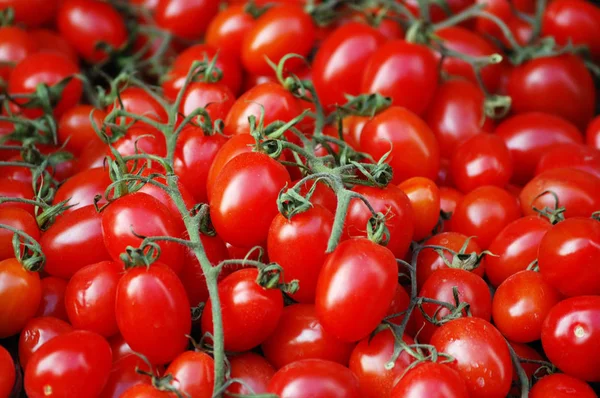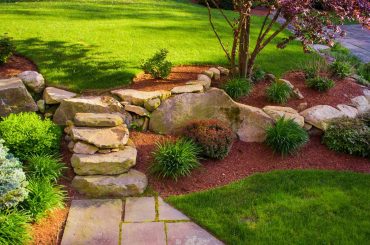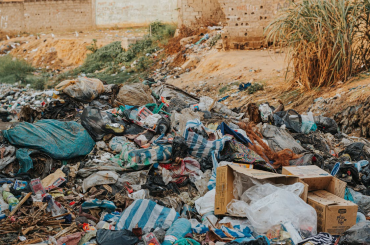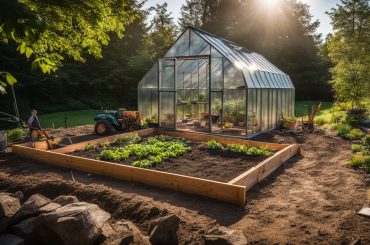Table of Contents
Do you love tomato-based sauces? What if you could make it for yourself? For this, all you have to do is plant and harvest Roma tomatoes!
As easy as it may look, growing Roma tomatoes is something that requires precision and vigilant effort. The degradation by plant pests, susceptibility of your plants to infections, or nutritional inadequacy can affect your harvest of Roma tomatoes.
Choosing the right soil, the right selection of fertilizer, watering conditions, and light exposure are other factors to understand before planting Roma tomatoes.
Among the different varieties of tomatoes, Roma tomatoes are distinctive because of their elongated egg-like shape, luscious flavor, and meaty flesh. This variety of tomatoes is preferred for canning and cooking because of their meaty texture and low water content.
You might want to grow Roma tomatoes for different purposes. Lastly, who does not prefer home-grown fruits and vegetables? In this blog, we will understand every aspect of growing Roma tomatoes.
About Roma Tomatoes
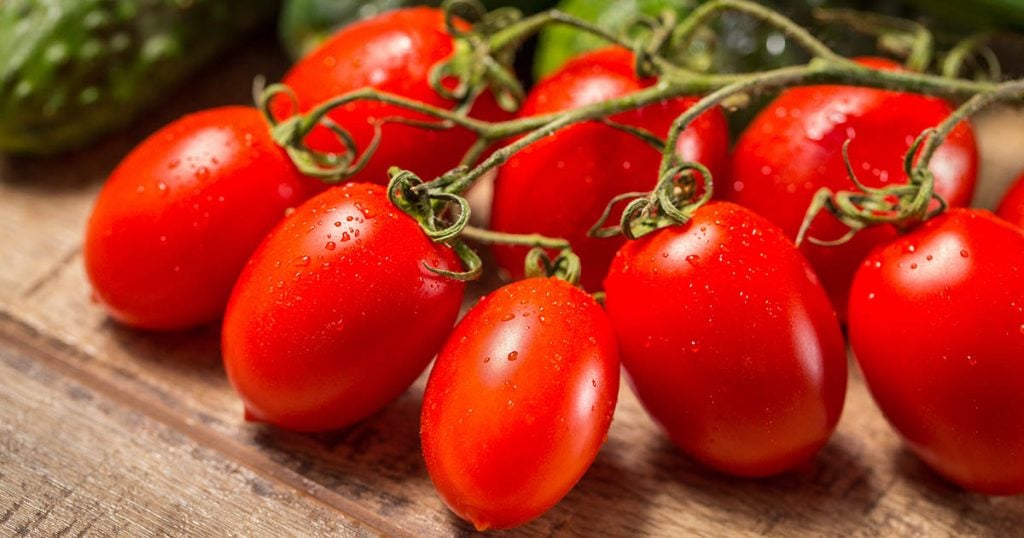
Roma tomatoes are the preferred choice for making sauces, purees, salsa, pastes, and canning. Hence they are sometimes commonly referred to as paste tomatoes. What makes them the ideal choice? The characteristics like bulky fruit wall, fewer seeds, lower moisture content, meaty texture, heavy and dense concerning their size, and elongated shape. The tomatoes have a characteristic bright red color. The color can vary for different hybrids.
Roma tomatoes, rich in taste, are a combination of sweet and tangy taste. The flavors are enhanced further when it is cooked or processed. The tomatoes can also be eaten raw, but this variety is more specific for canning and preparation of sauces. The thicker fruit wall also acts as a barrier to bruising and damage. This prevents potential physical damage to the tomatoes, increasing their shelf life.
Roma tomatoes come in different varieties. Some of the popular varieties of Roma tomatoes are:
- Granaredo
- Plum Regal
- Amish Paste
- Sunrise Sauce
- San Marzano
Growing Tips for Roma Tomatoes
1. Planting Seeds of Roma Tomatoes
Once you have purchased the seeds for Roma tomatoes, plant the seeds in the soil. Because the seeds will not survive in the frost, plant them after the frost spills. Sow the seeds half or one-fourth inch deep in organic and nutrient-rich soil added with potting mix. The seeds can be planted indoors about 6 to 8 weeks prior to the end of the frost season. The temperature requirements for the germination of seeds must be strictly maintained. The temperature for the daytime should be under the range of 75 and 85 degrees Fahrenheit, whereas 65 degrees Fahrenheit is the temperature required in the nighttime. Place the seedling trays in a place where they get ample sunlight, like windows facing the sun. If sunlight is unavailable, you can use grow lights or artificial lights to provide the ideal conditions for growth. The unavailability of adequate light will produce seedlings with elongated and leaning stems. Make sure you water them regularly without making the soil too soggy. Once the leaf growth in seedlings is visible, transfer them to pots in potting mix. Maintain a distance of 2 inches between the seedlings.
2. Hardening Your Seedling
Seedling hardening is important for any plant. Plants grown indoors have been grown in a protected environment. Plant your seedlings in an external environment need to be acclimated so they can adjust to the outside environment. The optimum time for hardening your seedlings is mid or late April. Start by placing the seedlings in the shade outside for some time. Make sure you start by choosing a shady area. You should slowly increase their time in the outside environment and place them under direct sunlight. In extreme weather situations, like windy days or too-hot temperatures, place them in a safer place and regularly monitor them. Too much sunlight can damage your seedlings by wilting them, whereas strong winds can damage them. Windbreaks can be used to nullify the effects of strong winds. It will take approximately a week for your seedlings to harden and toughen up for the external environment. Make sure the seedlings are not exposed to extremely low temperatures, which may limit their growth.
3. Transferring the Seedlings to The Pot Now
Now your seedlings are ready to be transferred to the pots. When choosing pots, ensure that pots provide sufficient aeration to the plants along with proper drainage to avoid water-logging. Material pots are the best choice for planting your seedlings. Keep the depth of the pot at least 14 to 16 inches. Water the plants regularly and expose them to sunlight for 6 to 8 hours. Stakes and cages can be added to provide vertical support to the growing plants when they start bearing fruits.
4. Shifting the Seedlings
Now your seedlings are ready to be transferred to the garden. You have to choose plants that are green and short, whereas tall, yellow, leaned seedlings must be avoided. Seedlings in which flowers have been formed must be avoided as well. When transferring seedlings, the environment should support their growth. During planting, make sure you bury the plant below the stem area. The night temperatures should not drop below 50 degrees Fahrenheit. Before you transplant the seedlings, make sure you water them regularly and adequately. A few of the lower branches can be removed, and support materials like stakes, trellises, and tomato cages can be aided to facilitate support to the growing plants. The spacing should be appropriate to avoid overcrowding of the growing plants. Ensure you provide a space of 14 to 20 inches between each seedling.
Now that we have learned all about growing Roma tomatoes, how would we know that it is ready for use? The quantity and quality of the yield of tomatoes will depend on how, ideally, you maintain the conditions for the plant. Your harvest will be completed in 70 to 80 days. The best way to know if your tomato is ripe or not is by checking the color. Your tomato should be bright red evenly. Once your tomato has a bright red color, it is time for you to pluck it and savor its deliciousness.
Plant Care Tips for Roma Tomatoes
1. Climate Conditions
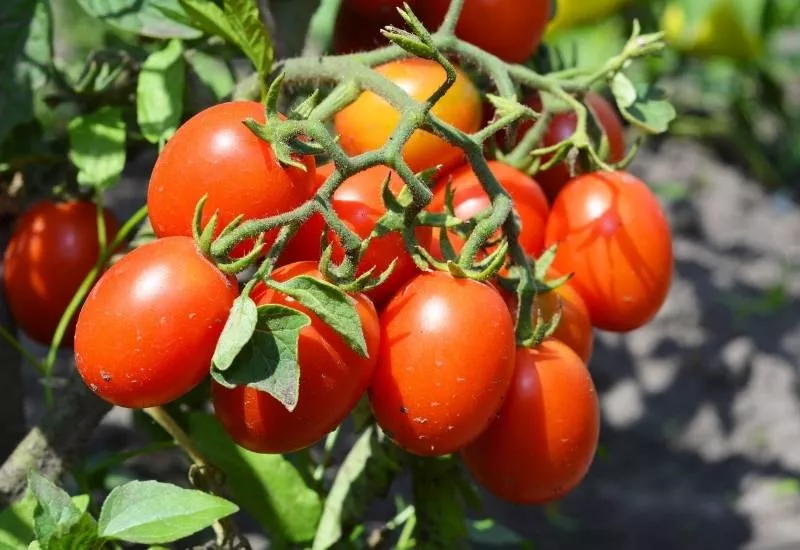
The climate conditions will greatly affect the growth of your tomatoes. The climatic conditions of your local area will decide the ideal period for planting the seeds. The seeds are sensitive to cold temperatures, so if there is a risk of frost, delay planting your Roma tomato plants. Roma tomatoes require warm temperatures for their growth. For colder regions with shortened growing periods, you can choose the varieties that mature comparatively quickly. The temperature range from 55 to 90 degrees Fahrenheit provides the best maturing environment for Roma tomatoes. Note that the nighttime temperature should not fall below 60 degrees Fahrenheit. Humidity is another crucial factor to take care of. A high-humidity environment can facilitate the chances of infection. This can be further aided by improper ventilation. Hence the circulation of air between and within the plants is important.
2. Pests & Diseases
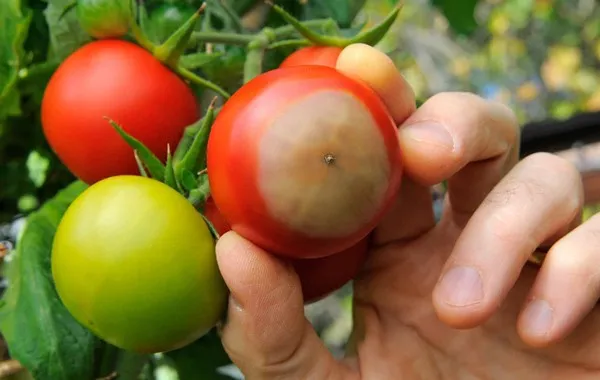
Different types of Roma tomatoes are a result of breeding, aiding in resistance to certain pests and microbes. For example, the plant is resistant to wilting caused by fungi (Verticillium & Fusarium fungi). Tomato Hornworms, Late Blight, and Blossom End Rot are a few common pests and diseases concerning Roma tomatoes. For controlling Horn-worm infestation, manual picking is the suitable method. A fungus is responsible for the Late Blight of tomatoes characterized by moldy spots. To control Late blight, remove all the afflicted parts of the plant. To protect your harvest from Blossom end rot, keep the soil evenly moist. Calcium deficiency is another reason for Blossom end rot, so it is advisable to supplement your soil with it. It is also important to prevent your plants from insects like aphids and white flies. Pest infestation and infections must be dealt with cautiously as they may affect the yield. Fungal infections are likely to spread across other plants.
3. Sun Exposure
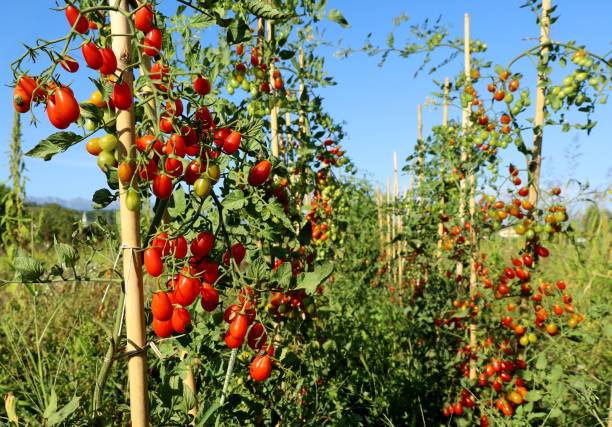
Roma tomatoes love being under the light. Not literally, but they require full sun for their growth and maturation. Roma tomatoes require sunlight at every stage, be it the seedlings or the adult Roma plant. The plants should get 6 hours of direct sunlight. When taking care of seedlings, make sure they get an adequate amount of sunlight. To provide ideal sunlight to the seedlings, place them under large windows that face the south direction. Additionally, greenhouses make a better choice for providing the required sunlight to your plants. Installing artificial lights is another way to manage the requirement of the plant.
4. Soil
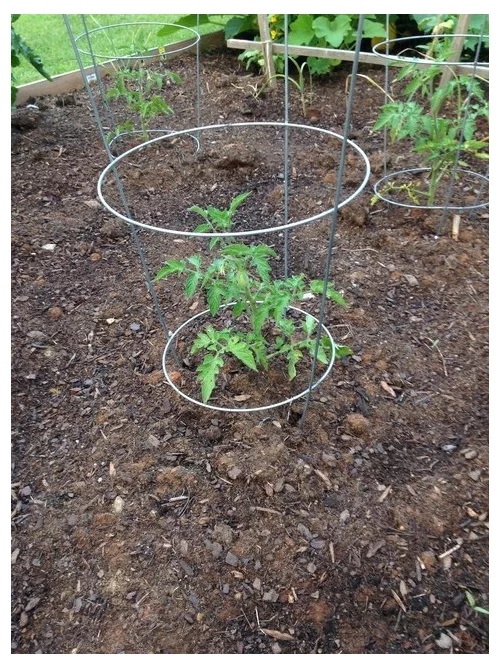
The soil requirement for Roma tomatoes is similar to that of any other tomato species. The soil must be warm, nutrient-rich, containing organic matter, and with efficient drainage. The plants can tolerate a slightly acidic pH of soil. The best pH for growing Roma plants is in the range of pH 5 to 6. 6.2 to 6.8 is the ideal pH condition for growing Roma tomatoes. Enriching the soil with organic matter and nutrients will have beneficial results for growth.
5. Water
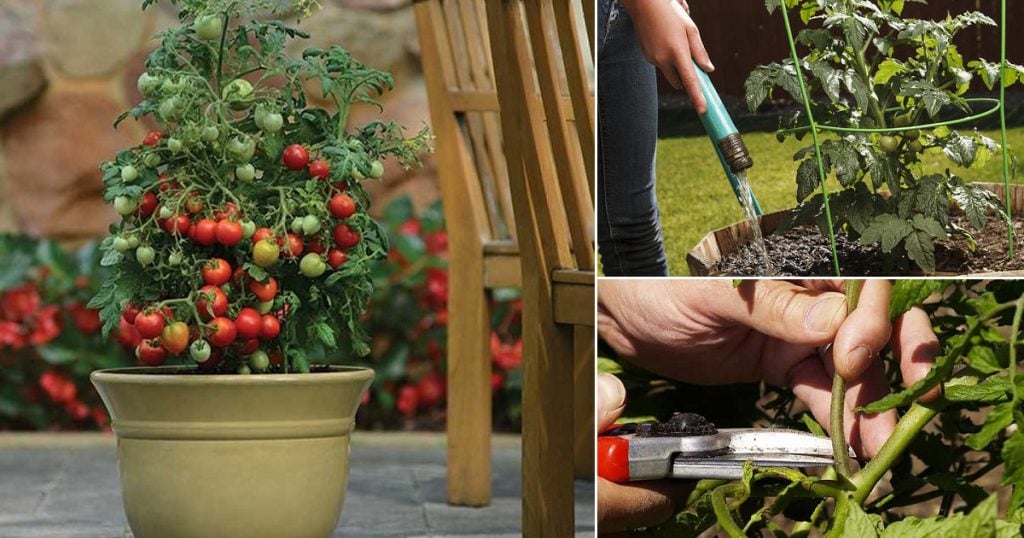
Roma tomatoes will water while they grow in sufficient amounts. When the plant is fruiting, the water requirements become more crucial. They must be well-watered every time. The soil’s moisture content must be regularly monitored. Lower water availability may cause split tomatoes, which means the cracking of tomatoes. When there is no rain, water them approximately 1 to 1.5 inches every week. While we are discussing water consistency, make sure that you are not over-watering your plant. Wet conditions while growing Roma tomatoes make the plant susceptible to fungal infections. You can deeply water the plant at least once rather than consistent shallow watering.
6. Fertilization
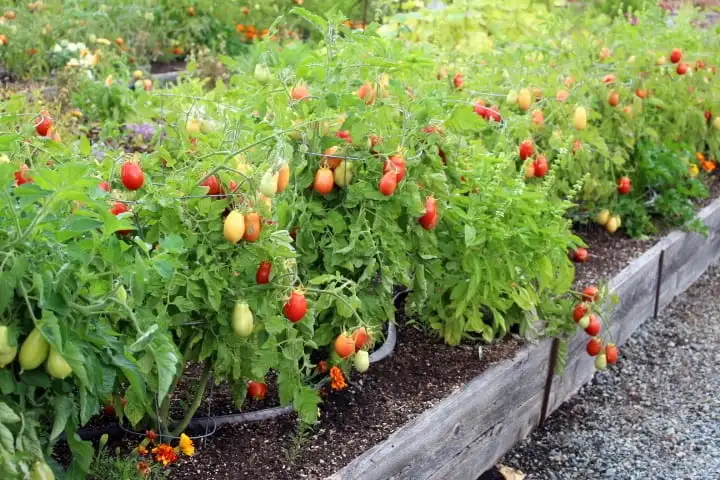
For growing Roma tomatoes, a rich nutritional feed must be added to the soil. Roma tomatoes are one of the heavy feeders. When you plant, phosphorus-rich fertilizers can be added to the soil. The ratio of required fertilizer, when the plant is growing will depend on the soil type. In the middle of the growing phase, the addition of low nitrogen is preferred. This will control the leaf growing to comprise the fruit production of the plant.
Some of the other areas where the plant needs care are Pruning, Weeding, and pollination. Roma tomatoes, being a bush plant, require almost no pruning. The plants require trimming to eliminate dead, infected, or wounded parts. Weeds are another trouble that may affect the growth of your plants. When removing weeds, make sure you do not damage the roots of the tomato plants. Being self-pollinating plants, pollination is quite easy. It is facilitated by wind and natural pollinators.
Conclusion
Growing Roma tomatoes is slightly different from harvesting regular tomatoes. But the basic requirements for all the tomatoes are somewhat similar. Do not expose the seeds to a cold environment. Frost spills will inhibit the survival of your plants. The growing seedlings should get adequate space for their growth.
Maintaining the environment for the growth of your plants is necessary. Your crop of Roma tomatoes will flourish with an adequate water supply, organic-rich soil, and the required conditions of pH, temperature, & sunlight exposure. Regularly check the plants for pest infestation.
Fulfill the nutritional demands of the plant by providing a rich nutritional feed to the soil. Now that you know everything about Roma tomatoes, harvest and enjoy the rich taste of home-grown tomatoes!
Frequently Asked Questions
What Type of Plant Is the Roma Tomato Plant?
The Roma plant varieties can both be determinant and indeterminate. So by choosing the types of yield, you can plant a specific variety of tomatoes. The determinant variety will grow over a narrow period, and the growth is ceased, and the plant will no longer produce more fruits. In contrast, the indeterminate varieties will produce fruits over an extended time.
How Many Fruits Can I Get from One Roma Tomato Plant?
The number of fruits per plant will depend on the variety and type of plant you have grown. For example, flowers obtained from determinant varieties will produce significantly lesser amounts of fruits when compared with indeterminate varieties. For example, you can expect an average of 30 tomatoes from a healthy determinant Roma tomato plant.
Why Are My Tomatoes Red but Have Dry Rot at The Bottom End?
The reason your tomatoes are showing dry rot at the bottom end can be because of the watering conditions or fertilization. A deficiency of Calcium can be one of the reasons the tomatoes are showing this symptom. Improving your watering patterns and adding calcium-rich soil can be used as a remedy.

